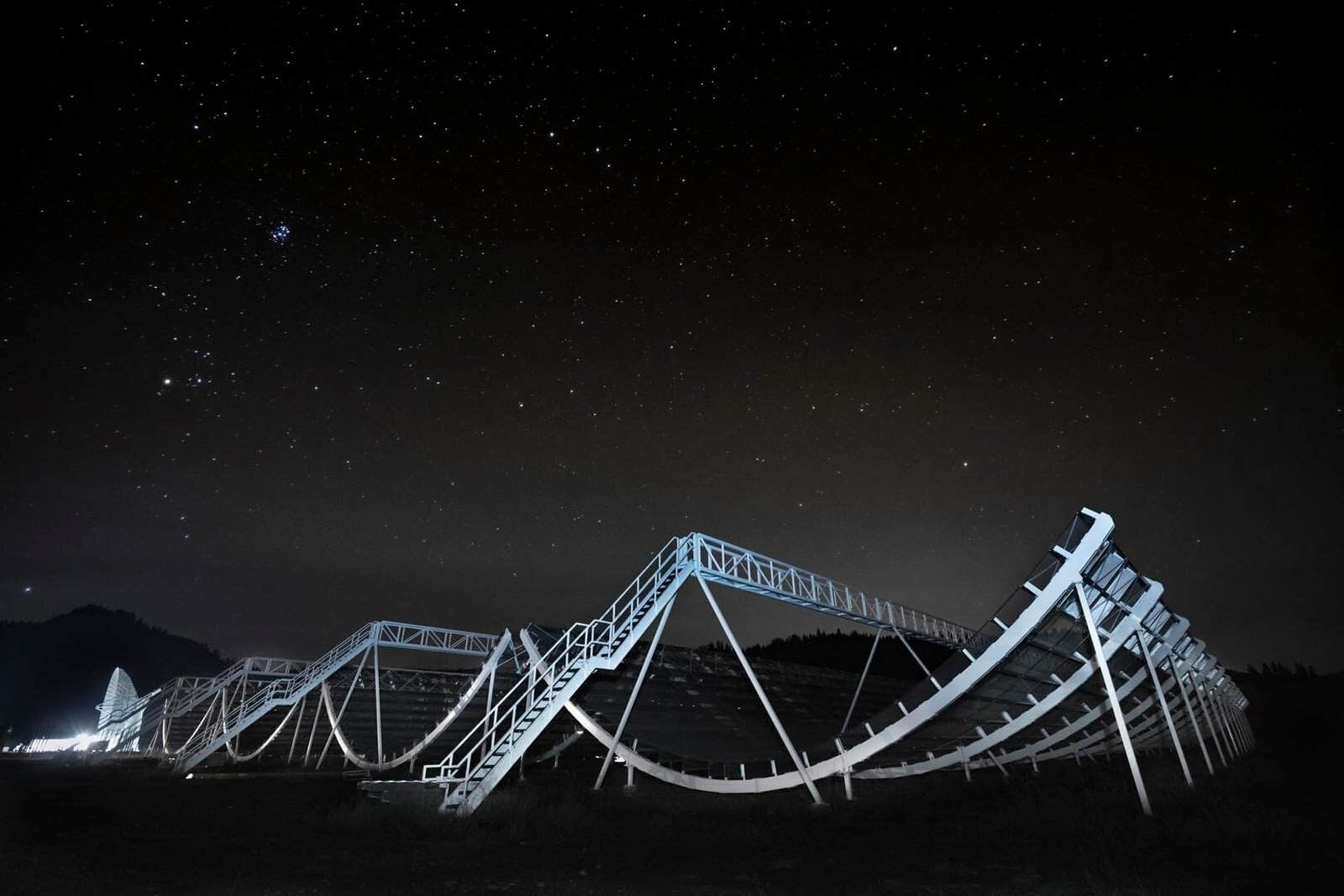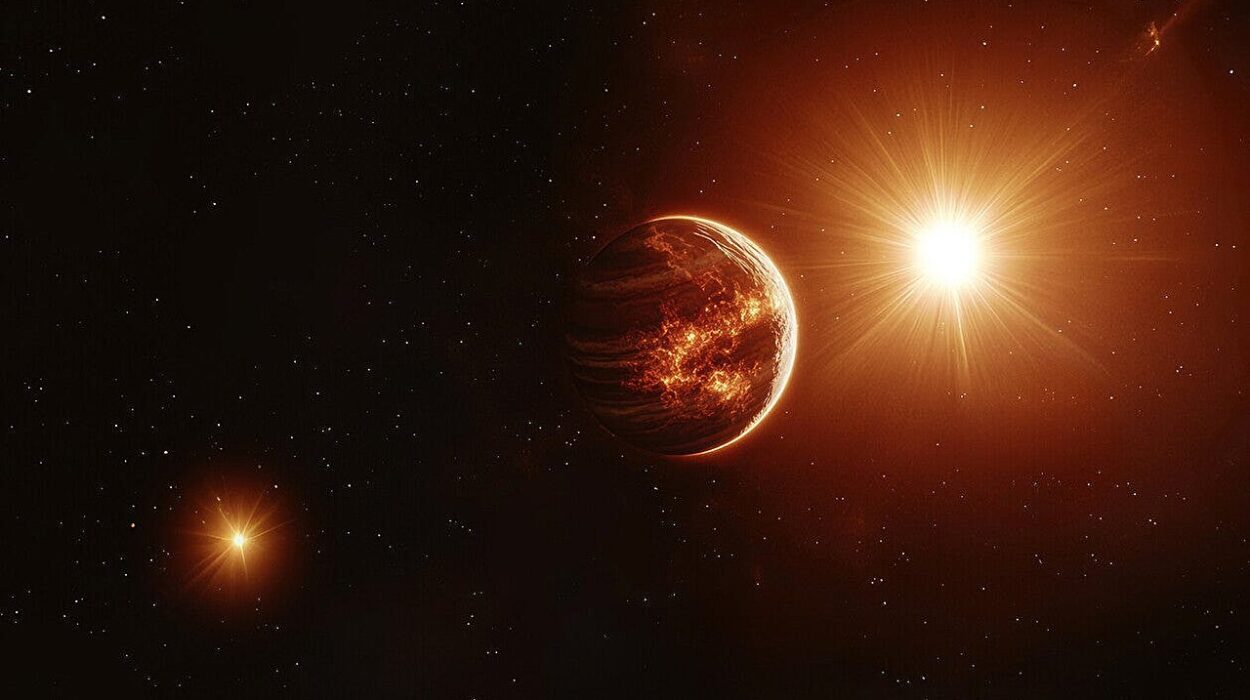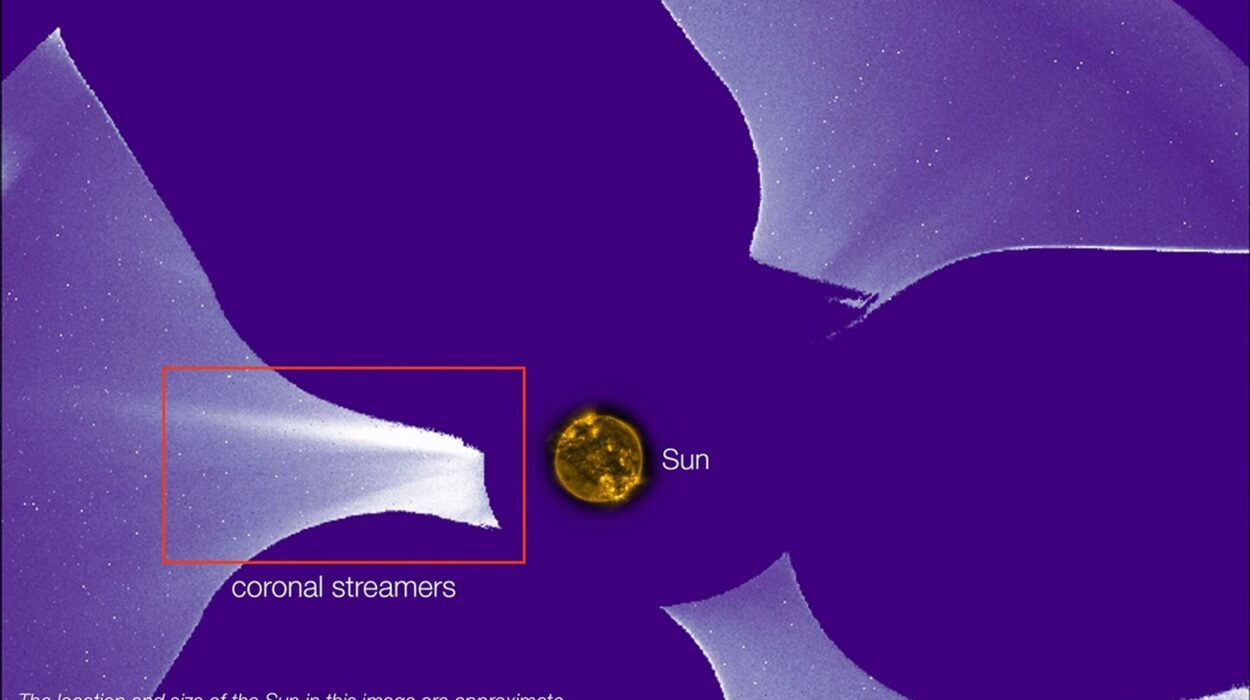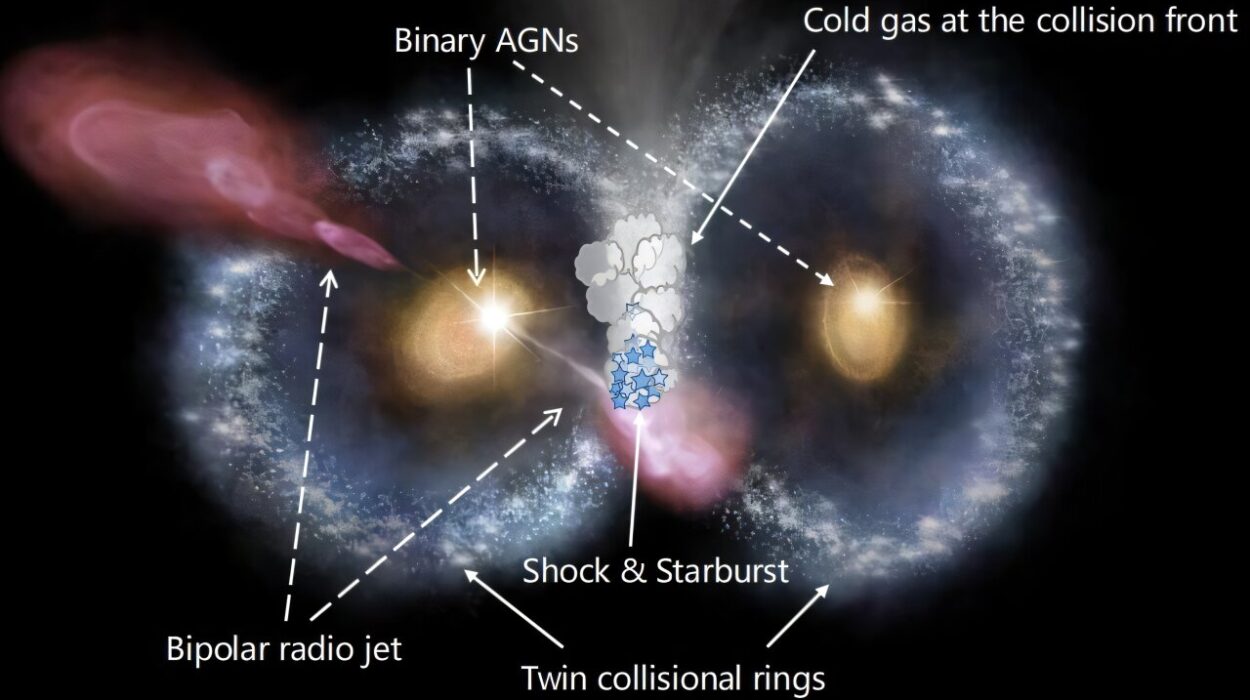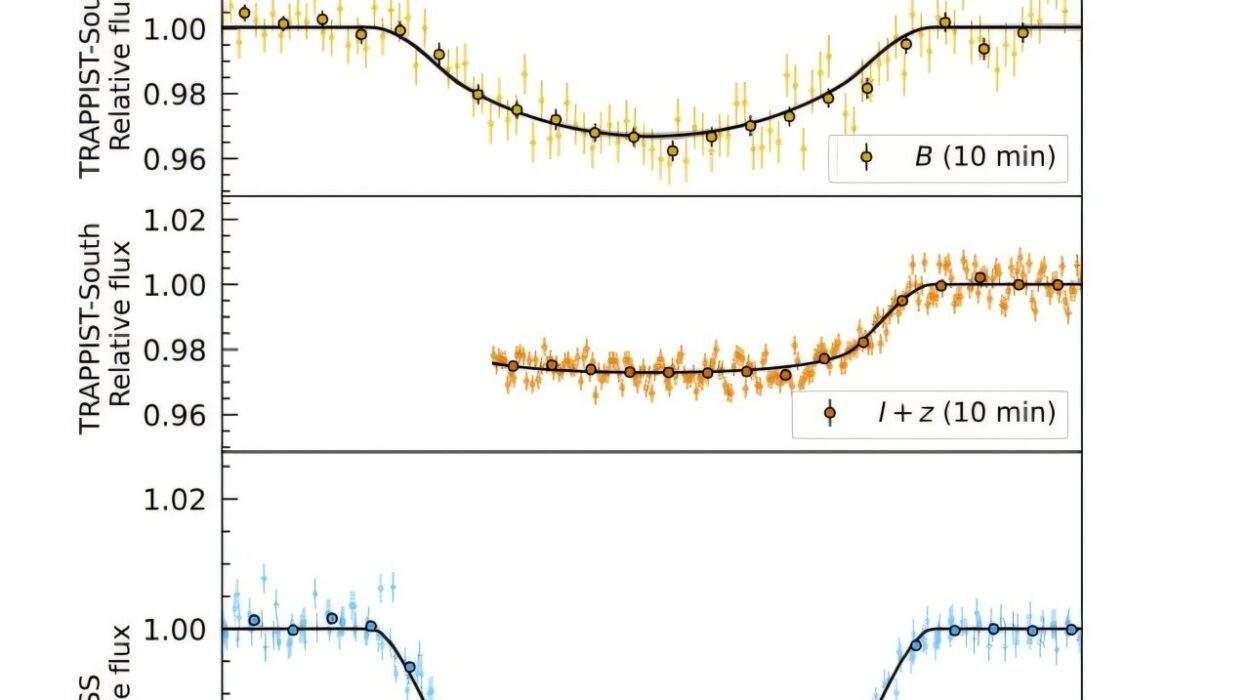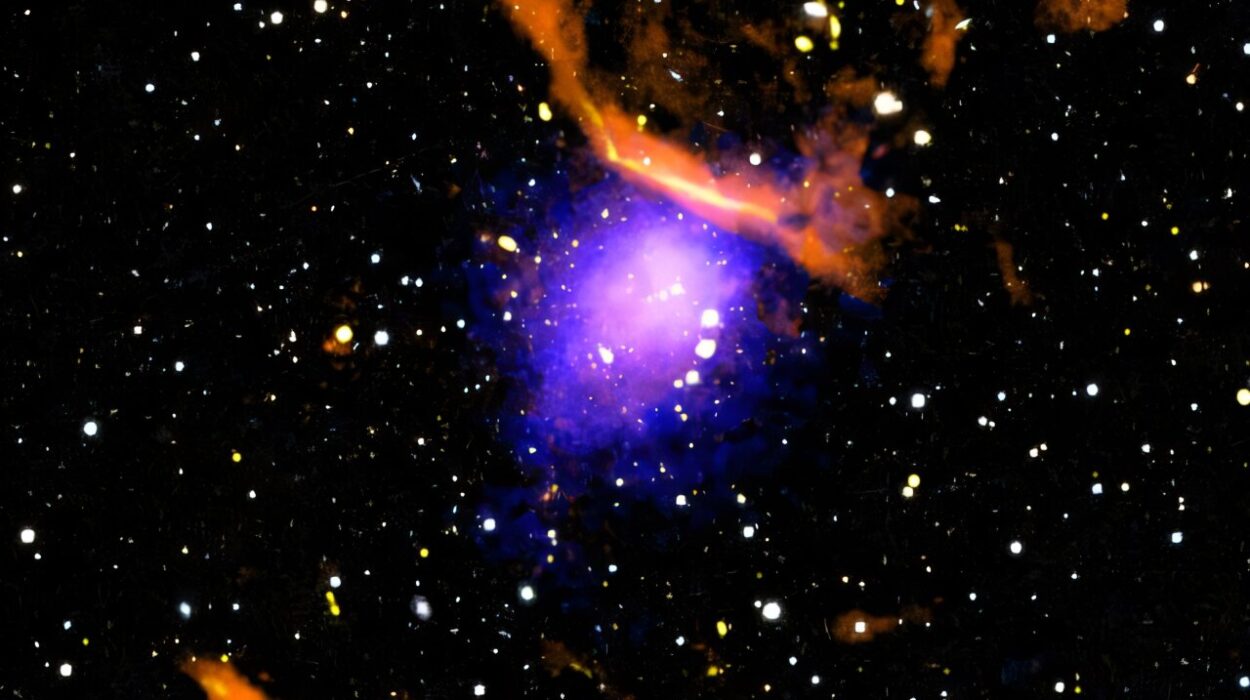For the first time, astronomers have identified a fast radio burst (FRB) originating from the outskirts of an ancient, dead elliptical galaxy—an environment far removed from the regions typically associated with such cosmic events. This groundbreaking discovery, outlined in two complementary studies published on January 21, 2025, in The Astrophysical Journal Letters, challenges longstanding assumptions that FRBs only emanate from young, active galaxies, showing that the origins of these powerful phenomena might be more diverse than previously imagined.
FRBs are intense, brief bursts of radio emissions that last just milliseconds but release more energy in a single pulse than our Sun does over an entire year. While their origin remains one of the greatest mysteries of modern astrophysics, prevailing theories had largely suggested that these powerful bursts arose in younger galaxies, typically associated with active star formation. The discovery of FRB 20240209A, however, provides compelling evidence that these cosmic bursts can emerge from vastly older galaxies, where new stars are no longer being born, challenging previous models of their origin.
A Surprising Discovery at the Edge of a Massive Galaxy
The FRB, dubbed FRB 20240209A, was first detected in February 2024 by the Canadian Hydrogen Intensity Mapping Experiment (CHIME). Over several months, the burst repeatedly flared, producing an additional 21 pulses, some of which were detected by an outrigger telescope stationed 60 kilometers away. These outlying telescopes allowed the team to precisely pinpoint the origin of the FRB, and the results were both astonishing and unexpected.
Using telescopes at the W.M. Keck and Gemini observatories, led by researchers from Northwestern University and McGill University, the team located the FRB at the outskirts of a massive, 11.3 billion-year-old elliptical galaxy, positioned approximately 2 billion light-years away from Earth. Instead of originating within the galaxy’s core, where active star formation might be expected, the FRB’s emission came from the outskirts—a surprising and unusual location for such an energetic event. At a staggering 130,000 light-years from the center of its host galaxy, this discovery raises fascinating questions about the conditions that can give rise to such intense and brief radio outbursts in regions with few new stars.
“This is incredibly exciting because FRBs are typically seen within galaxies, often in star-forming regions,” said Tarraneh Eftekhari, a NASA Einstein Fellow at Northwestern University’s Center for Interdisciplinary Exploration and Research in Astrophysics (CIERA) and lead author of one of the studies. “The location of this FRB at the edge of an ancient galaxy without active star formation pushes us to reconsider where and how such high-energy cosmic events are created.”
The discovery not only rewrites the story of where FRBs come from but also marks a pivotal moment in understanding the diverse cosmic environments capable of generating such energetic bursts.
A Unique, 11.3-Billion-Year-Old Host Galaxy
After locating the FRB’s position in the sky, Eftekhari and her team employed high-performance computers to simulate the characteristics of the host galaxy. Their findings revealed a galaxy far different from the young and vibrant ones associated with typical FRBs. The host galaxy of FRB 20240209A is incredibly massive, with a mass of around 100 billion times that of our Sun. It is also extremely luminous, but notably, it is also a “dead” galaxy, having long ago ceased its process of active star formation. This places the galaxy among the largest and oldest galaxies observed, yet starkly contrasts with the environments traditionally considered prime candidates for FRB production.
“We’ve observed the most massive FRB host galaxy to date,” said Eftekhari, underscoring the surprising nature of this discovery. The newly identified FRB shatters the prevailing paradigm of FRBs being tied exclusively to regions teeming with young stars, signaling the possibility of older galaxies contributing to the enigmatic outbursts.
Why This Location is So Surprising
What further set this discovery apart is the unusual location of the FRB in relation to its host galaxy. Typically, FRBs are observed emerging from the interiors of their galaxies or, at the very least, within the realms where young stars are being born. However, in this case, the FRB occurred far from the bustling heart of the galaxy. The distance from the galaxy’s center places the burst in a region so far removed that it appears to be in an exterior zone where new stars have stopped forming. The question now arises: how can such a high-energy phenomenon occur in a star-poor region of a seemingly “dead” galaxy?
Vishwangi Shah, a graduate student at McGill University who led the effort to pinpoint the FRB’s origins, added, “This FRB is located in one of the furthest positions from its galaxy’s center among all known FRBs, which raises fundamental questions about how these energetic bursts form far from regions where star formation is occurring.”
Notably, this marks only the second time an FRB has been traced to the outer fringes of a galaxy. Previously, in 2022, astronomers discovered another FRB on the edges of Messier 81 (M81), a spiral galaxy located about 12 million light-years away. The two events share a similarity: both occurred in regions not abundant in new stars, a situation that complicates the traditionally understood models of FRB creation. The recent discovery suggests that such cases are not flukes, but part of a wider phenomenon deserving of further exploration.
Magnetars, Globular Clusters, and Exotic Possibilities
Astronomers have long speculated that FRBs originate from magnetars, which are ultra-magnetic neutron stars formed by the collapse of massive stars in supernova explosions. FRB 20240209A’s anomalous position has led astronomers to propose new progenitor models for such FRBs—ones that would explain their occurrence in environments with few young stars.
One such possibility is that the FRB originated within a globular cluster, a dense grouping of ancient stars that resides outside the main regions of galaxies. These clusters could harbor magnetars formed in ways different from those typically seen in younger stars. In fact, Shah and her team hypothesize that the globular cluster could account for the FRB’s unusual location and its emergence from an environment with minimal stellar activity. While there is currently no direct evidence for a globular cluster in the vicinity of FRB 20240209A, a proposal has already been submitted to the James Webb Space Telescope to carry out further observations.
If confirmed, this would make FRB 20240209A only the second FRB definitively found within a globular cluster. Alternatively, more exotic scenarios such as the merger of two neutron stars or a collapsing white dwarf could provide insights into other potential origins.
“This discovery opens the door for more questions and more possibilities,” said Wen-fai Fong, senior author and an associate professor of physics and astronomy at Northwestern University. “What we once thought to be the typical environment for an FRB—the young, star-forming regions of a galaxy—might only represent one class of progenitors. The universe continues to surprise us and forces us to rethink our assumptions.”
An Exciting Time for FRB Research
The discovery of FRB 20240209A represents a significant moment in astrophysical research, one that underscores the broad spectrum of environments that could give rise to these mysterious cosmic phenomena. With fewer than 100 FRBs fully traced back to their host galaxies, there is still much to explore about their origins and their implications for astrophysics.
“It’s clear that there’s still a lot to learn about FRBs and their environments,” Eftekhari remarked. “This discovery shows us that FRBs aren’t limited to active star-forming regions, and that their true diversity may hold the key to finally unlocking the cosmic mystery of what causes these powerful bursts.”
In the quest to understand the origins of FRBs, the results of these studies suggest that we might only be scratching the surface of an even greater revelation that will continue to excite astronomers and enthusiasts alike. FRB 20240209A might just be the beginning of a deeper exploration of the fascinating, yet perplexing nature of one of the universe’s most energetic phenomena.
Conclusion
The discovery of FRB 20240209A originating from the outskirts of an ancient, massive elliptical galaxy has reshaped our understanding of fast radio bursts and their environments. Traditionally linked to young, star-forming regions, this FRB defies those assumptions by appearing in a “dead” galaxy with minimal stellar activity, raising questions about the mechanisms driving such energetic phenomena. The potential link to exotic origins, such as magnetars in globular clusters or neutron star mergers, highlights the diversity and complexity of FRB progenitors.
This finding underscores the importance of continued exploration of FRBs across varied cosmic landscapes to uncover their true nature. With tools like the James Webb Space Telescope poised to investigate this event further, the research paves the way for new theories and groundbreaking insights. As this puzzle unfolds, it reminds us of the universe’s ability to constantly challenge and expand the boundaries of human knowledge.
References: A repeating fast radio burst source in the outskirts of a quiescent galaxy, The Astrophysical Journal Letters. On arXiv: DOI: 10.48550/arxiv.2410.23374
The massive and quiescent elliptical host galaxy of the repeating fast radio burst FRB 20240209A, The Astrophysical Journal Letters (2025). arxiv.org/abs/2410.23336
